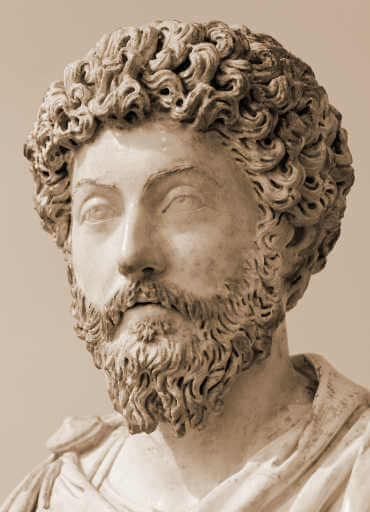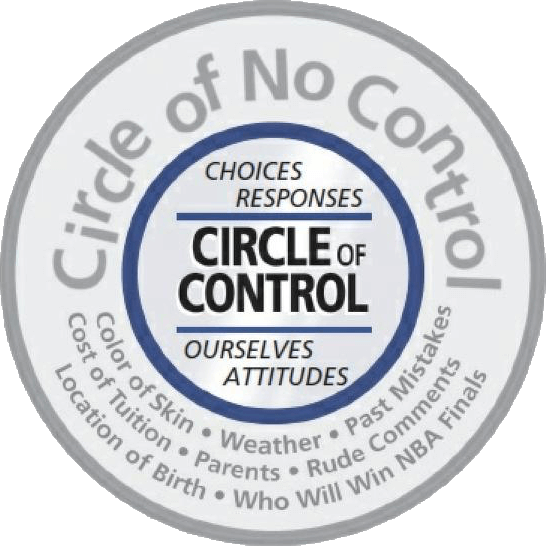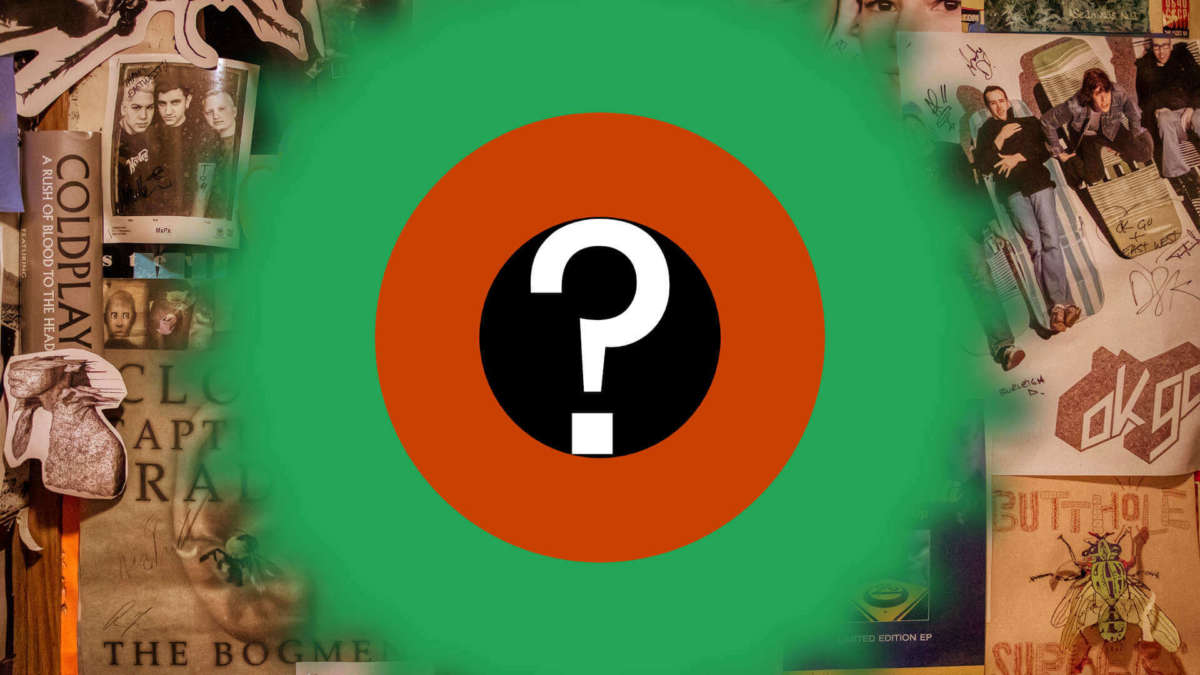Within the realm of behavioral finance, a frequently touted concept necessary to achieve financial freedom is the circle of control. It’s often associated with the circles of influence and concern, as coined by Stephen Covey. But that innermost circle of proactivity and concern—the circle of control—is a myth.
Here’s how the three spheres of concern within your life are said to work:
- Outermost: circle of concern, everything you care about
- Inner: circle of influence, what you care about, and have indirect control over
- Innermost: circle of control, what you care about, and have direct control over (yourself)
I’ve got news for you: the concept of a circle of control doesn’t exist within Stephen Covey’s book The 7 Habits of Highly Effective People.
Where did the “Circle of Control” come from and what is it?
Circles of Concern & Influence
Before we go about finding the origin of the circle of control and how it’s been conflated with the circles of concern and influence, let’s define the latter two.
Covey defines the circle of concern as containing everything we focus our time and energy on.
- Our health
- Our family
- Work problems
- The national debt
- Nuclear war
Within this array of concerns, there are some which we have control over and some which we do not.
For those which we can do something about, we could identify them as being within our circle of influence.
Proactive vs reactive
Covey goes on to explain why it’s important to be proactive to expand your circle of influence rather than reactive which will shrink it.
From a personal finance standpoint, this is important.
- Being reactionary causes you anxiety as the stock market goes up and down
- Being proactive with falling interest rates let’s you capture value by refinancing your mortgage
It makes sense to strive to reduce what falls solely within your circle of concern by either:
- Expanding your circle of influence through more proactive “being”
- Contracting your circle of concern by cutting out that which you don’t plan to ever have influence over
Reducing your circle of concern
When looking at our first set of concerns, you might reduce your circle of concern by worrying less about nuclear war. You could treat it as a reality in life that you have to accept, as a dim possibility not unlike the potential for being struck by a meteor.
Unless you happen to be a world leader, your ability to influence nuclear war now or in the future is slim.
You have to decide where to put your energy within your circle of concern.
With regard to work problems, you might be able to move them to within your circle of influence through proactive effort.
Rather than reactively chiding your boss’s missteps from the sidelines, you could leverage your strengths to support their weaknesses.
- Do more than is expected
- Anticipate leadership’s needs
- Empathize with the underlying concern
- Reveal your expertise through holistic recommendations
As Covey explains:
It’s so much safer to say, “I am not responsible.” If I say “I am responsible,” I might have to say, “I am irresponsible.”
For most modern humans, the problem lies not with the size of your circle of influence but rather the size of your circle of concern relative to influence.
We have a lot that we’re concerned by in a modern, highly interconnected world.
The information economy relies on using analytical data to target you with highly effective marketing.
Embracing an attitude opposite of FOMO might be just what you need: it’s The Joy of Missing Out or JOMO to shrink your circle of concern.
The Circle of Control
You might have noticed that a central theme to the circle of concern and circle of influence is control.
It’s your choice to be either proactive or reactive.
It’s up to you to prevent your concerns from growing out of control and shrinking your circle of influence.
You can start to see how the myth that conflates these three circles has come about.
Most acutely, the concepts of direct control, indirect control, and no control add to the confusion.
Direct, indirect, and no control
Within the circle of influence, Covey explains that problems must fall into one of three categories of control:
- Direct: problems involving our own behavior
- Indirect: problems involving other’s behavior
- No control: problems we can do nothing about (like our past or present reality)
You can resolve direct problems by working on your own habits and values. Instead of checking the stock market daily, you can remove headline notifications from your phone or uninstall the app.
Covey suggests changing your methods of influence to correct problems with other’s behavior. Rather than simply proceeding from reasoning to flight or fight when reasoning fails, you should have other tools of influence available.
Much of the third part of the book deals with these tools of influence (there’s 30, like: persuasion, empathy, and example).
Finally, problems that fall within your circle of influence that you have no control over must be accepted. Covey explains that acceptance is a form of control.
No problems can exist within the circle of influence that do not fall into one of these forms of control.
→ Aside: Philosophically, this type of strength through acceptance harkens to Stoicism—something I very much enjoy.
Core to this Ancient Greek philosophy is accepting the moment as it presents itself, by not allowing oneself to be controlled by desire or by fear.
Your aim should be to protect your ability to enjoy the small things in life, don’t yield to the connoisseur effect.

“Accept the things to which fate binds you, and love the people with whom fate brings you together, but do so with all your heart.”
— Marcus Aurelius, Meditations
Source of the “Circle of Control”
Finally we get to the original source of the circle of control.
The 7 Habits of Highly Effective People, by Stephen Covey, was written in 1989. The concept of a circle of influence and circle of concern sprouted from the book as we’ve discussed.
While control in your life serves as a theme throughout the book, the phrase “circle of control” doesn’t exist within it.
Covey had a son.
In 1998, The 7 Habits of Highly Effective Teens was written by Sean Covey, Stephen Covey’s son. It’s a simplified version of his father’s book aimed at kids.
In it, Sean Covey addresses control with two circles.
Circle of No Control vs Control
In Teens, Sean Covey writes about how there’s only so much we have control over in our lives.
He cites examples of things we can control:
- Ourselves
- Attitudes
- Choices
- Responses
Additionally, he cites examples of that which we can’t control:
- Where our ancestors came from
- Who will win the Superbowl
- How much tuition will be next fall
- How others might treat us
The author asks the reader to picture two circles where the outer circle contains that which you can’t control.
This is your circle of no control.
The inner circle contains all the things you have direct control over in your life.
This is your circle of control (tada!).

Sean did not leave room for a middle circle of things you might have influence over but no control over.
The dynamic between the circle concepts created by this father and son author duo was conflated over time to be a singular concept. But really, they’re two different ideas.
→ Aside: Conflating the circles of influence and concern with control has spread to influential FIRE folks like Mr. Money Mustache.
Control vs influence
Clarifying these circles as two separate concepts is constructive because it allows us to focus on the original concept that Stephen Covey created with the circle of influence.
Instead of getting lost with the idea of what we have control or don’t have control over, we can focus on how we can wield influence.
Control is what we seek, but influence is how you arrive at the destination. As Dr. Lickerman suggests, “control is denied [to] us but influence is what we need.”
We fail at seeking control over those around us (and even over ourselves). This is because humanity is defined by independence and autonomy.
I cannot wrest control from you and force you to:
- Vote the way I want you to
- Build a life you want, then save enough money for it
- Stop comparing yourself to others since it’s the thief of joy
- Find purpose in your work so that money is secondary
- Or to be a disciplined investor by avoiding known behavior gaps
The truth is, sometimes I can’t even control myself.
I’ve known what the research says about index funds vs stocks yet I still manage to lose money doing the wrong thing.
But influence?
Influence I can apply liberally.
I just need to figure out a way to get you to follow any of those links above to what I’ve written in an effort to help you.
And while you’ll probably not do what I want, which might frustrate me, it also challenges me to better myself and my writing.
In doing so, it might just help you become your better self.
Circle of Control FAQ
Let’s do a quick review.
Sean Covey created the circle of control in his book The 7 Habits of Highly Effective Teens.
Visualize two circles. The inner circle is filled with that which we have control over—our choices, attitudes, reactions, and ourselves. This is our circle of control. Surrounded by it is all the things which we can’t do anything about—the circle of no control. The concept was created by Sean Covey.
Visualize two circles. The inner circle contains all the concerns you have and which you can do something about. For example, you may be concerned about your finances and could start living below your means to save. The outer circle contains all that you’re concerned about but which you have no influence over. For example, you may be worried about the global economy but have virtually no control over it. The concept was created by Stephen Covey.
Myth of the Circle of Control
There you have it. The circle of control as it pertains to the original circle of influence and circle of concern by Stephen Covey is a myth.
But as you saw, that doesn’t mean it’s a useless concept. It sheds a brighter light on the relationship between influence and control.
Influence is something you can wield to enact change in your life around you. Control is something you seek but often fail to achieve.
Of the things in your life that lie in your circle of concern, what do you want to move into your circle of influence?
Will you exert direct, indirect, or no control over that thing in order to do so?
Of the things in your circle of concern, are there some which you should banish from your life altogether to shrink your circle of concern?
Let me know in the comments!


10 replies on “The Circle of Control Is a Myth (Choose to Wield Influence!)”
Thanks for sharing. I like the comparison between control and influence. Personally, I’m about 40% of the way through “7 Habits” (just starting Habit 3: Put First Things First) but keep getting distracted and reading other more interesting books on my Kindle (hello, “The Black Hand”). I usually burn through books, but with “7 Habits” I’ve tried to go slower and let it soak it. But doing so also has sapped my momentum. I’ll have to pick it up again.
For this sort of a book, I think it’s OK to treat it as a bit of “choose your own adventure”.
That’s doubly true considering the book was written in the 80s, some principles don’t hold up as well. Still, plenty of pieces of wisdom.
The whole section on proactive/reactive and influence was the most interesting to me.
Don’t let that sunk cost fallacy sink your reading time unnecessarily 😉
I’ve read the 7 Habits twice, and go back to it intermittently. I think you hit the nail on the head here. I think it’s easier for those of us who are into Personal Finance to fall into this trap of trying to find a way to control things that will always just be out of reach. This is because if we’ve found a way to control our financial habits ie. spending, savings… we think there must be a way to easily apply this method to other aspects of our life if we try hard enough, however futile it may be.
JOMO, I like that. I’ll have to keep that in my pocket for when my kids are teens.
Yep! Having read the section on concern/influence/control multiple times to write this piece, I really feel like Covey would have been upset to see “control” becoming the central point of this section of the book in modern interpretations of it.
A quick Google for “circle of control” will show just how prevalent it is, not to mention loads of graphical reinterpretations.
Influence gets left behind, but that’s what Covey focused on.
He wanted us to work on the thing we have control over, which, counterintuitively isn’t CONTROL. It’s influence.
Through influence, we can arrive at the same conclusion that we desire from control—but can actually wield it, unlike control which is left to gods and fate.
And, haha, yeah—I wasn’t familiar with JOMO prior to this.
Then I googled “what’s the opposite of FOMO?” and stumbled across it. I might just have a post coming with more on that 😉
In the time of the election, this is an especially timely post.
I’ve become pretty good at letting stuff outside of my circle of control go, but some things still bother me. I wish they didn’t!
I think a lot of it is tied to ego, perhaps not the definition that comes to mind for most, but more of a stoic definition.
Marcus Aurelius: “It never ceases to amaze me. We all love ourselves more than other people, but care more about their opinions than our own.”
Ryan Holiday has some good things to say too:
“This is what the ego does. It crosses out what matters and replaces it with what doesn’t.”
“Ego is the enemy- giving us wicked feedback, disconnected from reality. It’s defensive, precisely when we cannot afford to be defensive. It blocks us from improving by telling us that we don’t need to improve. Then we wonder why we don’t get the results we want, why others are better and why their success is more lasting.”
What is the solution then? I’m not sure, but one thing I’ve thought about is to acknowledge and accept that I’m not important. If I think less of myself, then there is nothing for others to hurt me with and I become less concerned about control (why would I be so arrogant to think I can change ___?).
I’d love to hear your thoughts!
Haha, Carl—are you quoting Marcus Aurelius in response to my post quoting Marcus Aurelius?! 🙂
Stoicism in general is packed full of the sort of psychology that enables someone to cut back and pursue a life of financial independence. They certainly seem like they go hand-in-hand.
So far as Holiday, I appreciate he writes about the topic in a modern way and even has his own spins on ideas like the circle of control or circle of influence (or concern!).
I finished up Obstacle is the Way last year, I believe. Something about it didn’t really hit me right, though. Plenty of wisdom, but a lot of words perhaps. I’m not sure.
So far as your question…
Well, that’s an interest approach. I think being able to see yourself objectively, as if from a third party’s POV, is healthy. You can think with a little less bias, and to your point, see your own relative importance from another’s POV.
I think you can do that while simultaneously realizing that subjectively, you yourself, is important. To you. And from the individual’s point of view, that does matter.
But by being able to see yourself as the less important person that others see you as, you can also disarm their ability to do (non-physical) harm to you—as their words and thoughts don’t carry much weight for themselves against you, so should they not, for you, from your own POV.
This is the first I’ve heard of Sean Covey’s (good to know it runs in the family) Circle of Control, but I have a different opinion regarding it.
Control is passive, you either learn to leverage it, or it ends up using you (reactions, impulses, etc). It is worth addressing, but there are couple things that you will also need to see to find that balance:
Known Knowns (already in reach, which is a priority?)
Known Unknowns (you know you don’t know enough, how should they be a concern?)
Unknown Unknowns (outside of your concerns, are they necessary?)
We all have to look both in and outwards, but there will always be something beyond that will influence or inspire you even more. I call this the Circle of Posterity, it might (or not) come into use someday.
As Darwin would put it,
“It is not the strongest of the species that survives, not the most intelligent that survives. It is the one that is the most adaptable to change.”
It isn’t just what you have that will takes you further, you also have to step out and step up.
Ian,
Thanks for your take on these circles! I appreciate the POV of your Circle of Posterity. It’s an interesting idea to bring the knowns and unknowns (Johari window) into the Circles concept.
To your closing point on Darwin, I think much of what both Coveys were attempting to focus on was using analysis to help determine where we might change for the better.
Love the distinction between “control” vs “influence” here.
Reading High Output Management lately, and the book talks about how most of a manager’s job really isn’t to do / execute on stuff, but to “influence” subordinates to be able to do things by nudging them.
Different application of “influence” but I think the concept is the same. We try our best and do a process which’ll maximize the likelihood of success. But just as we have no control over the outcome of a stock / fund we pick, a manager would have no control over the actions of her subordinates.
But we can certainly try to influence the situation.
Interesting article and perspective.
It seems to me the concept of “control” in this article is slightly skewed from what Dr. Covey conveyed.
Regarding Dr. Lickerman’s reference to control, he stated “At least [control] in the sense of the kind of control we really want: an absolute ability to determine the exact results we want in all—or even any—circumstances.”
My understanding of Covey’s concept of control was not that of trying to control situations, other people, or results; but rather, to control our actions, and doing those things which we can do that consequently yield (hopefully) desired influence.
Although we cannot absolutely control situations, other people, or results – we can control our actions. Any implication that we cannot control ourselves (i.e. our actions) is simply inappropriate. There are myriads of people who have exceptional control over their behavior despite difficult feelings and situations. Of course, no one has “absolute” control over their behavior “all of the time”. But most people can control their behavior most of the time.
If the set of behaviors that I exert in a specific (controlled) way, render influence in a desired way, then I can draw a cirlce around this set of (controlled) behaviors and call it my “circle of control”. In this context, my (controlled) actions certainly impact my influence.
Therefore, there is an element of control relative to influence.